Leaf Feeders
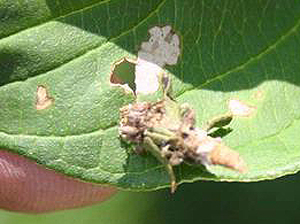
William Fountain, University of Kentucky, Bugwood.org
Bagworms are caterpillars that live in distinctive spindle-shaped silk bags covered with small bits of leaves from the host plant. Large populations of bagworms can strip plants of their foliage and eventually cause them to die. Infestations often go unnoticed because people mistake the protective bags for pine cones or other plant structures. For more information, see Entfact 440.

Lee Townsend, University of Kentucky
Japanese beetles can feed on about 300 species of plants ranging from roses to poison ivy but basswood is one of their favorites. They usually feed in groups, starting at the top of the tree and working downward, and prefer plants that are exposed to direct sunlight. A single beetle does not eat much; it is group feeding by many beetles that causes severe damage. Adults feed on the upper surface of foliage, chewing out tissue between the veins. This gives the leaf a characteristic skeletonized appearance. For more information, see Entfact 451.
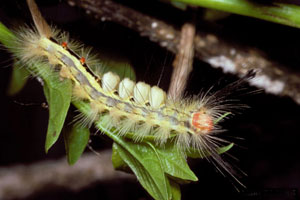
Gerald J. Lenhard, Louisiana State University, Bugwood.org
The White-marked tussock moth caterpillar has a distinctive appearance with four distinct white tufts of hair projecting from behind a red head. The other hair on the body is white with yellow markings beneath, two black "arms" in front, and a long brown "tail" in back. Early instars cause skeletonizing damage while large caterpillars can eat everything except major leaf veins. There are two broods per year (June-August and August-November).
Sap Feeders
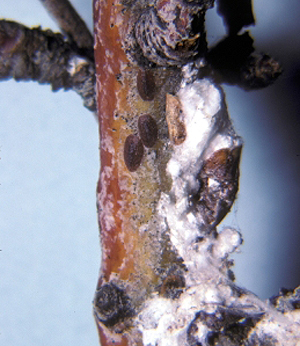
Raymond Gill, California Department of Food and Agriculture, Bugwood.org
A mature female cottony maple scale is 1/8 inch long with a brown, flat, oval body. Infestations are most easily noticed during the summer when females produce white, cottony egg sacs that resemble pieces of popcorn on twigs. These scales also produce large amounts of liquid waste (honeydew) so leaves may be shiny and sticky and black sooty mold fungus may cover branches and the trunk. They spend the winter in an immature stage on twigs or branches and complete development in June when the egg sacs appear. Eggs hatch during June and July and crawlers move to the lower surface of leaves where they settle feed on sap for the rest of the summer. Just before leaf drop, the small insects will move back to twigs and branches to spend the winter. There is one generation each year.
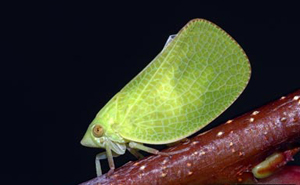
Susan Ellis, Bugwood.org
Leafhoppers are small, light green, active insects that live on the underside of the leaves. They use sucking mouthparts to feed on plant sap. Usually large numbers are present by the time the injury is obvious. Heavily damaged leaves may drop early but this insect usually does not cause serious problems.
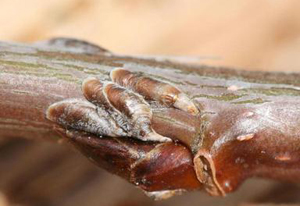
Whitney Cranshaw, Colorado State University, Bugwood.org
Oystershell scales are about 1/10 inch long and resemble crusty accumulations of oyster shells on the bark. Their drab, bark-like appearance makes them easy to overlook, even on close inspection. Heavy infestations can kill twig or branches. This scale overwinters in the egg stage under the waxy covering of the female. The eggs hatch and the crawlers are active from late May to early June.